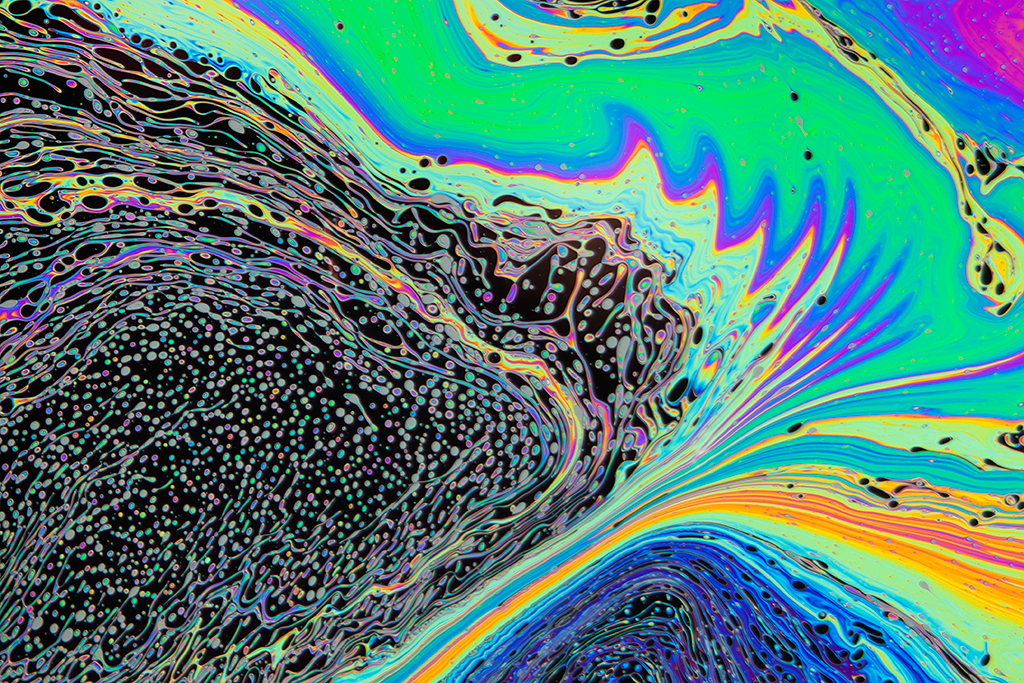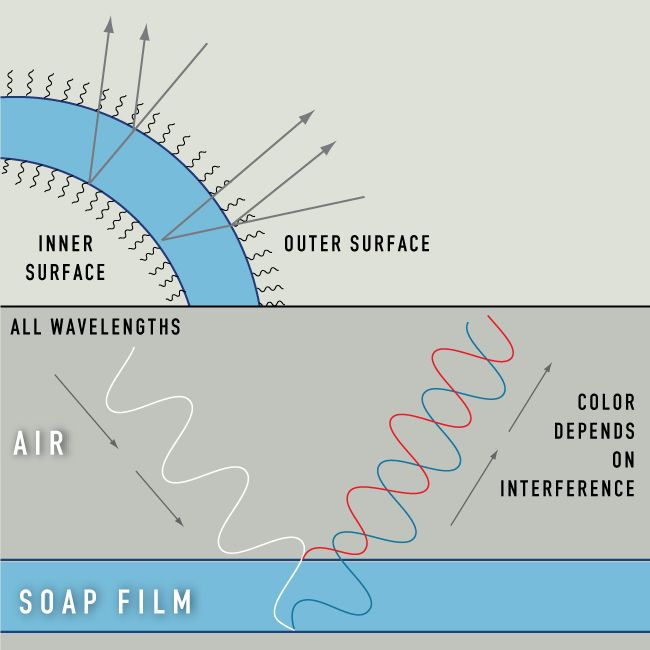Soap Up Close
March 27, 2019
Thin Films Create "Destructive" Magic

Each of the dazzling colors on display in this soap film actually corresponds to a different degree of thickness.
Image Credit: © Copyright Linden Gledhill Photography
What's Going On Here?
Have you ever wondered where the amazing rainbow swirls of a soap bubble come from? The secret lies in soap bubbles being transparent, reflective, and very, very thin. Soap bubbles are so thin that it's easy to forget they're not totally two-dimensional. But in reality, they're spherical shells with distinct outer and inner surfaces.
When light shines on a soap bubble, some of it hits at the proper angle to get reflected off the outer surface, but most passes pretty much straight on through. But the light that passes through the outer surface of the bubble hits another surface, almost immediately—the inner surface of the bubble.
Light can be reflected or refracted any time it reaches the boundary between two different materials. The transition from air to soap can reflect light, but so can the transition from soap back to the air inside the bubble.

Image Credit: Causes of Color, WebExhibits.org
Photons—the waves of electromagnetic energy that make up light—have alternating peaks and dips in their intensity, just like waves at the beach. And when two photons from a ray of light are reflected off a bubble's surfaces in quick succession, it can shift the alignment of their peaks relative to one another. If two photons end up aligning peak-to-dip, they cancel one another out, and their light disappears! This is called "destructive interference".
Whether or not this happens depends on the light's color, as well as on the distance it travels between reflections—i.e. the thickness of the soap film. As a result, changes in the film's thickness give rise to the mesmerizing patterns of color you see here!














